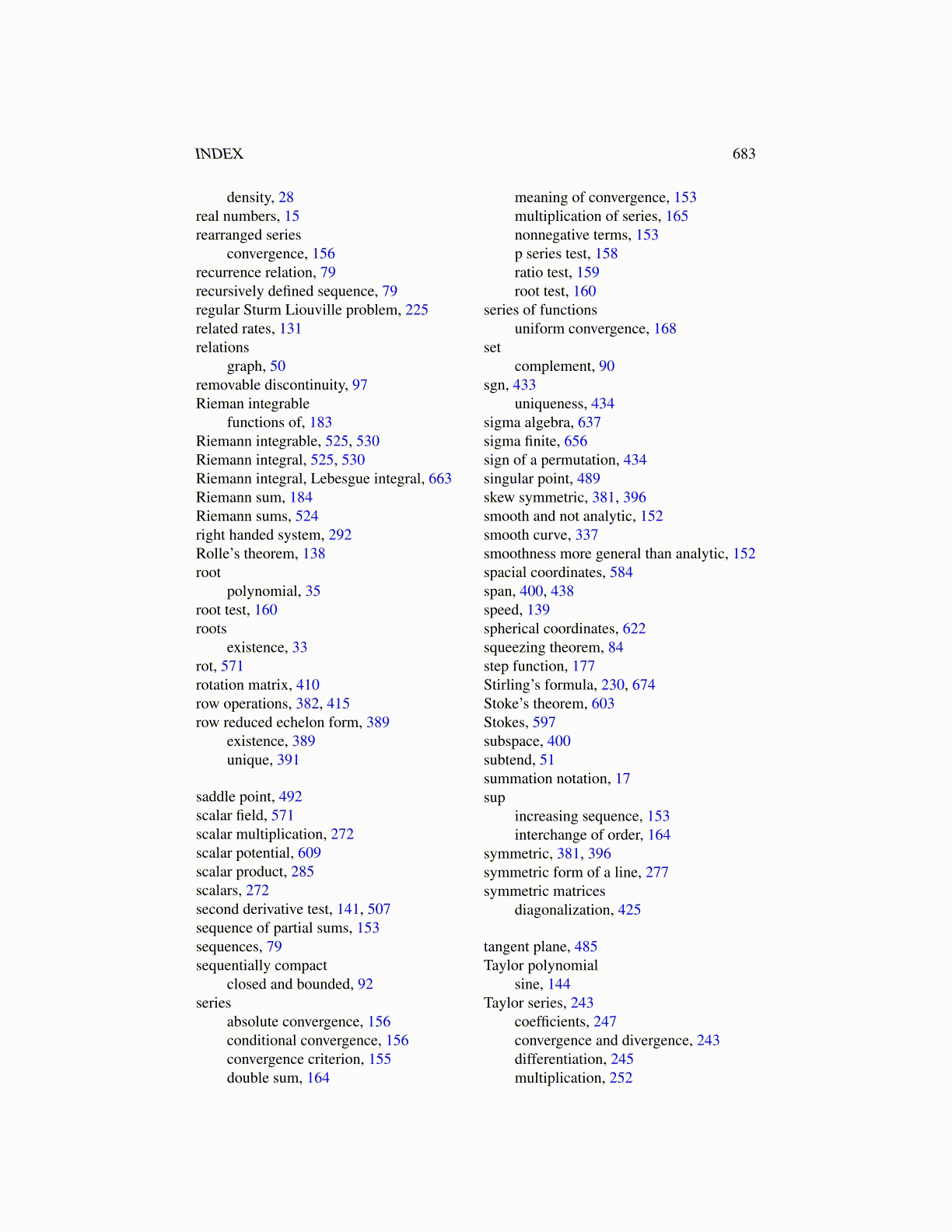
33.7. EXERCISES 683
13. To integrate complex valued functions f : Ω → C, first note that these are defined tobe measurable if the real and imaginary parts are measurable. Then∫
f dµ =∫
(Re f )dµ + i∫
(Im f )dµ
In the context of probability distribution measures described above, explain whyeverything makes sense and for t ∈ Rp∫
Ω
eiX(ω)·tdP =∫Rp
eix·tdλX ≡ φX (t)
This is called the characteristic function. It turns out that these completely character-ize the probability distribution measures but this is a topic for a more advanced bookwhich has important representation theorems not discussed here.
14. Show that there exists a subset of R consisting of everything off a set of measure nomore than ε which contains no intervals.
15. This problem outlines an approach to Stirling’s formula following [26] and [8]. Fromthe above problems, Γ(n+1) = n! for n ≥ 0. Consider more generally Γ(x+1) forx > 0. Actually, we will always assume x > 1 since it is the limit as x → ∞ which isof interest. Γ(x+1) =
∫∞
0 e−ttxdt. Change variables letting t = x(1+u) to obtain
Γ(x+1) = xx+1e−x∫
∞
−1
((1+u)e−u)x du
Next let h(u) be such that h(0) = 1 and
(1+u)e−u = exp(−u2
2h(u)
)Show that the thing which works is h(u) = 2
u2 (u− ln(1+u)). Use L’Hospital’s ruleto verify that the limit of h(u) as u → 0 is 1. The graph of h is illustrated in thefollowing picture. Verify that its graph is like this, with an asymptote at u = −1decreasing and equal to 1 at 0 and converging to 0 as u → ∞.
−1
1
Next change the variables again letting u = s√
2x . This yields, from the original
description of h
Γ(x+1) = xxe−x√
2x∫
∞
−√
x/2exp
(−s2h
(s
√2x
))ds